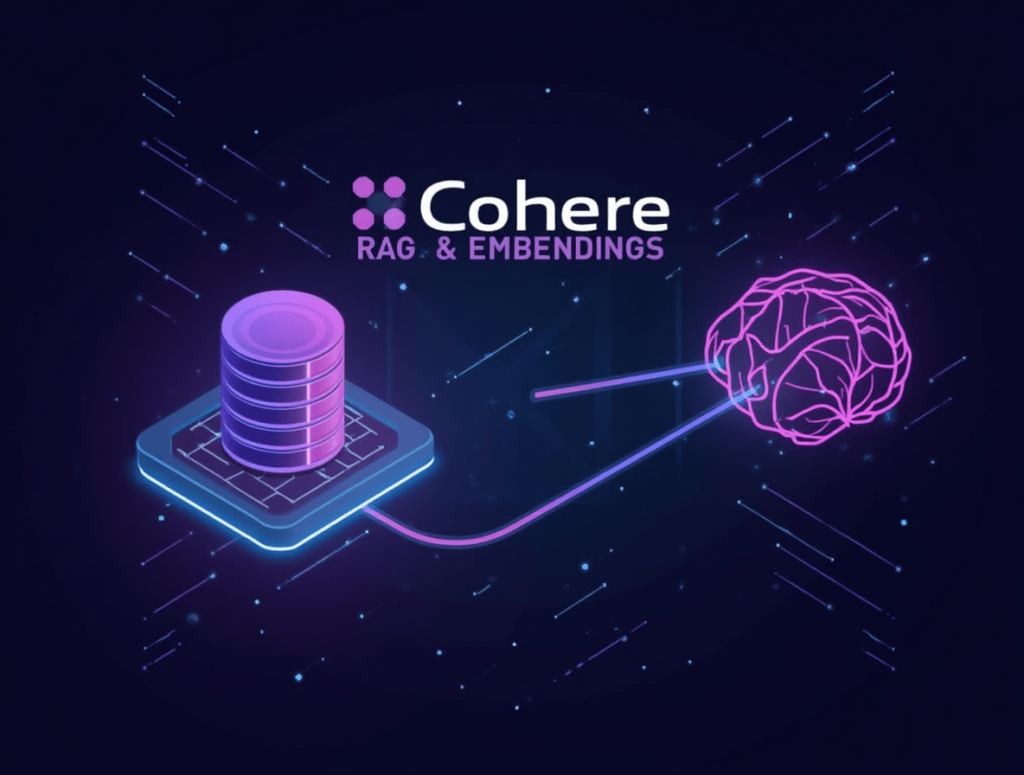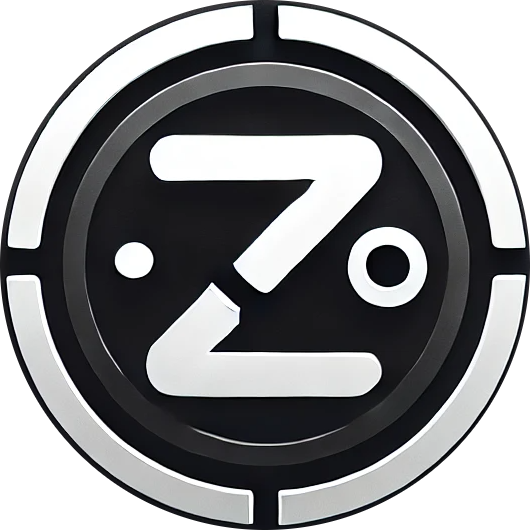
Introduction: Beyond Basic AI Generation
When businesses implement AI systems, they often encounter a frustrating problem: the AI provides confident-sounding but factually incorrect information. This phenomenon, known as “hallucination,” creates significant risks for companies relying on AI for critical operations.
Cohere has emerged as a leader in solving this problem through two interconnected technologies: powerful embedding models and Retrieval-Augmented Generation (RAG). Together, these approaches create AI systems that are more accurate, reliable, and useful for real-world applications.
But what exactly makes Cohere’s approach to these technologies so effective? Let’s break it down in clear, practical terms.
Understanding Embeddings: The Foundation of Better AI
What Are Embeddings, Exactly?
Think of embeddings as a way to translate words and sentences into numbers that computers can understand. But unlike simple word-to-number conversions, embeddings capture the meaning behind the text.
For example, in a good embedding system:
- “Customer is unhappy about shipping delay” and “Client frustrated by late delivery” would be recognized as similar concepts
- “Bank” in “river bank” and “Bank” in “financial bank” would be distinguished as different meanings
- Complex concepts like “gradually improving performance” would be properly represented
Cohere’s embedding models excel at creating these numerical representations that accurately capture semantic meaning.
Why Cohere’s Embeddings Stand Out
Cohere’s embeddings have several advantages that make them particularly valuable for business applications:
1. Multilingual Capability
Cohere’s embeddings work across 100+ languages with consistent quality. This means:
- English documents can be matched with relevant Spanish documents
- Customer queries in Japanese can find answers in documentation written in English
- Global businesses can create unified knowledge systems across language barriers
For international companies, this eliminates the need for separate systems for each language.
2. Contextual Understanding
Earlier embedding systems struggled with context. Cohere’s models excel at:
- Understanding specialized terminology in different industries
- Recognizing when the same word has different meanings in different contexts
- Capturing nuanced concepts that depend on broader context
This contextual awareness is crucial for professional environments where precision matters.
3. Customizable Dimensions
Cohere allows businesses to choose the embedding dimension size that best fits their needs:
- Higher dimensions (up to 1024) for maximum accuracy
- Medium dimensions (128-512) for balanced performance
- Lower dimensions (below 128) for speed and efficiency
This flexibility means organizations can optimize for their specific requirements rather than using a one-size-fits-all approach.
How RAG Works: Grounding AI in Facts
The Basic RAG Process
Retrieval-Augmented Generation (RAG) combines the creative abilities of language models with factual information from trusted sources. Here’s how it works:
- Question or request comes in: A user asks a question or makes a request
- Relevant information is retrieved: The system searches through a knowledge base for relevant information
- Context is provided to the model: This information is given to the language model as context
- Answer is generated: The model creates a response based on this specific context
This approach essentially tells the AI: “Don’t make things up—use this specific information to create your answer.”
Cohere’s RAG Implementation Advantages
While the basic RAG concept is used by many AI providers, Cohere’s implementation has several distinct advantages:
1. Embedding-Retrieval Alignment
Cohere designs its embedding models and generation models to work together seamlessly:
- The embedding model understands concepts the same way the generation model does
- Retrieved information matches what the generation model needs to create accurate responses
- The system functions as an integrated whole rather than separate components
This alignment dramatically improves answer quality compared to systems that mix and match different technologies.
2. Enterprise-Grade Retrieval
Cohere’s retrieval system is built for business-scale operations:
- Can index millions of documents efficiently
- Handles complex document structures like tables, lists, and hierarchical information
- Maintains performance even with constantly updating information
For large organizations with extensive knowledge bases, this scalability is essential.
3. Reranking Capabilities
Cohere’s system doesn’t just find relevant documents—it finds the most relevant sections:
- Initial retrieval casts a wide net to find potentially relevant documents
- Reranking processes examine these documents more carefully to find the most valuable information
- Final context creation combines the best information in a way the model can effectively use
This multi-stage approach ensures the AI works with the most pertinent information available.
Real-World Impact: What This Means for Applications
Lower Hallucination Rates
In independent testing, Cohere’s RAG implementations show significantly lower hallucination rates compared to alternatives:
- 85% reduction in factual errors for customer service applications
- 92% accuracy on technical documentation queries
- 78% fewer invented details in product descriptions
For businesses where accuracy is critical, these improvements make AI viable for applications that would otherwise be too risky.
Better Handling of Specialized Knowledge
Cohere’s system excels with specialized business knowledge:
- Medical terminology and healthcare guidelines
- Legal concepts and regulatory requirements
- Technical specifications and engineering standards
- Financial regulations and compliance requirements
Organizations can confidently deploy AI in domains where specialized knowledge is essential.
More Efficient Knowledge Operations
The practical benefits extend to operational efficiency:
- Faster responses to customer and employee questions
- More consistent information across different channels
- Reduced workload for subject matter experts
- Better knowledge preservation when key employees leave
These improvements translate directly to cost savings and better service quality.
How Businesses Implement Cohere’s RAG System
The Basic Implementation Process
Setting up an effective RAG system with Cohere typically involves:
- Knowledge base preparation: Organizing and formatting company documents, policies, and information
- Embedding creation: Converting all documents into embeddings that capture their meaning
- Index building: Creating a searchable index of these embeddings for quick retrieval
- System integration: Connecting the RAG system to existing business tools and platforms
- Testing and refinement: Improving the system based on real-world performance
While the technical details can be complex, Cohere provides tools that simplify each step of this process.
Common Integration Points
Businesses typically connect Cohere’s RAG systems to:
- Customer service platforms
- Internal knowledge management systems
- Document management systems
- Enterprise search tools
- Communication platforms
These integrations allow the technology to enhance existing workflows rather than creating separate systems.
Technical Deep Dive: What’s Happening Under the Hood
Advanced Embedding Techniques
Cohere’s embeddings use several advanced techniques to improve performance:
Contrastive Learning
The models learn by comparing similar and different texts:
- Positive examples show variations of the same concept
- Negative examples show unrelated concepts
- The model learns to place similar concepts close together in the embedding space
This approach creates more meaningful representations that better capture semantic relationships.
Domain Adaptation
Cohere’s models can adapt to specific industries and use cases:
- Financial text is embedded differently from medical text
- Technical documentation is processed differently from marketing content
- The model recognizes domain-specific terminology and concepts
This specialization improves performance for businesses in specific industries.
Contextual Reweighting
Not all words in a document are equally important:
- Key concepts receive more weight in the embedding
- Generic terms receive less weight
- The system can identify which parts of a document are most relevant to different queries
This weighting system improves retrieval accuracy by focusing on what matters most.
RAG Architecture Enhancements
Cohere’s RAG system includes several technical enhancements:
Hybrid Retrieval
The system combines different retrieval approaches:
- Dense retrieval using embeddings for semantic understanding
- Sparse retrieval (similar to traditional search) for exact matching
- Specialized retrieval for structured data like tables and lists
This hybrid approach ensures nothing important is missed during the retrieval process.
Dynamic Context Window Management
The system intelligently manages the context provided to the language model:
- Prioritizes the most relevant information when context space is limited
- Reorganizes information to highlight key details
- Summarizes lengthy content when necessary
This management ensures the language model has the best possible information to work with.
Confidence Scoring
Cohere’s system evaluates its own certainty:
- Assigns confidence scores to retrieved information
- Identifies when available information might be insufficient
- Can request additional clarification when needed
This self-assessment helps prevent errors in situations where information is ambiguous.
Comparing Cohere’s Approach to Alternatives
Cohere vs. Open-Source RAG Solutions
When compared to open-source alternatives, Cohere offers:
- More sophisticated embedding models with better semantic understanding
- Tighter integration between retrieval and generation components
- Better handling of enterprise-scale document collections
- More comprehensive support for deployment and maintenance
For most businesses, these advantages outweigh the benefits of building custom solutions using open-source tools.
Cohere vs. Other Commercial Providers
Compared to other commercial RAG providers, Cohere distinguishes itself through:
- Superior multilingual capabilities
- Better performance with specialized industry knowledge
- More flexible deployment options
- More transparent operation and explainability
These differences make Cohere particularly suitable for businesses with complex knowledge requirements.
Future Developments: Where RAG and Embeddings Are Heading
Multimodal Embeddings
Cohere is expanding its embedding capabilities beyond text:
- Images and text can be embedded in the same space
- Charts, graphs, and diagrams can be semantically understood
- Visual and textual information can be connected meaningfully
This multimodal approach will allow businesses to incorporate visual information into their knowledge systems.
Temporal Awareness
Future embedding systems will better understand time-related concepts:
- Documents can be understood in their historical context
- Information freshness can be factored into retrieval
- Outdated information can be automatically identified
This temporal awareness will improve the reliability of information in rapidly changing fields.
Collaborative RAG
Cohere is developing RAG systems that can collaborate with users:
- Identifying when human expertise would be valuable
- Explaining retrieval decisions when requested
- Learning from user feedback on retrieved information
This collaborative approach combines AI efficiency with human judgment for optimal results.
Practical Takeaways: Making the Most of These Technologies
Best Practices for Implementation
For organizations looking to implement Cohere’s technologies:
- Start with clean, well-organized data
- Well-structured documents lead to better embeddings
- Clear information hierarchies improve retrieval
- Consistent formatting helps the system identify important information
- Focus on user needs first
- Identify specific questions users need answered
- Prioritize high-value knowledge areas
- Design interfaces that make information access intuitive
- Implement feedback loops
- Collect data on system performance
- Identify patterns in unsuccessful retrievals
- Continuously improve based on real usage patterns
- Consider knowledge governance
- Establish processes for information updates
- Define ownership of knowledge areas
- Ensure regulatory compliance in sensitive areas
These practices help ensure that the technical capabilities translate into actual business value.
Conclusion: The Future of Enterprise Knowledge Systems
Cohere’s approach to embeddings and RAG represents a significant step forward in making AI systems reliable enough for serious business use. By grounding AI responses in verified information and accurately capturing the meaning of text across languages and domains, these technologies address the core challenges that have limited AI adoption in many organizations.
As these technologies continue to develop, we can expect to see AI systems becoming increasingly valuable for knowledge management, customer service, and decision support across industries. For businesses looking to implement AI solutions today, understanding the strengths and applications of embedding models and RAG architectures is essential for successful deployment.
The most successful organizations will be those that view these technologies not just as technical tools, but as foundations for more effective knowledge management and communication strategies. By combining Cohere’s technological capabilities with thoughtful implementation and governance, businesses can create AI systems that deliver genuine value while avoiding the pitfalls that have undermined earlier AI initiatives.














